
..........................................................................................................................................................................................................
hidden in plain sight
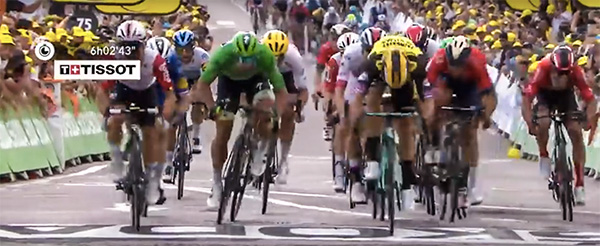
islay, at one time, was renowned for being home to more committees per head of population, than anywhere else in scotland. quite who had undertaken the necessary research to uncover this mildly irrelevant fact, i know not, but there was no denying that an inordinate number of annual general meetings were advertised on the back page of our local newspaper over the course of a year. many of these committees - and they might well be every bit as numerous today - underpin island society and without which, social life on islay would be very much the worse for wear.
one of the above mentioned committees, engaged in machinations of a more onerous nature than bowling or quilting, undertake discussions at a national level, ensuring that a singular aspect of island life continues to benefit local society. in truth, if it didn't exist, we'd have to invent it. the members are hard-working, a factor that can be easily gauged by measuring their success, but it's true that their efforts take place in the background, largely unrewarded and mostly unknown by the island's residents. and though particular members of this committee maintain that they do not act in the hope of public approbation, every now and again, while singing this particular tune, it becomes obvious that, in fact, they feel that a smidgeon of applause wouldn't go amiss. it's a curious balance point; steadily maintaining anonymity, while fervently hoping for recognition.
it's a similar situation as that encouraged by those three weeks in july. though, in a 'normal' year, there would be any number of cycle trade shows across the world in which to announce new products, much of the tangible results are frequently to be seen integrated into the various teams' tour bikes. an extra sprocket here, an electronic gear shift button there; i'm sure you catch my drift. but though much of the above is being tested or featured at the tour, in point of fact, much of it isn't really.
to explain my point a bit more clearly, many of those developments alluded to above, are hidden in plain sight, for there seems possibly more cachet or kudos to be gained if these products are 'discovered', rather than 'announced'. those of you in the habit of perusing youtube videos of an evening, will probably have seen a number of presentations by the likes of cyclingtips and gcn in which a hapless presenter scours the team bus park, looking for and pointing out, any new variations across the team bikes laid out in rows adjacent to the coaches.
you see, if any such 'top secret' developments were, in fact, 'top secret', i seriously doubt they would be on public display, and i figure a burly mechanic would already have made this plain to the reporters and camaramen who seem to have carte blanche to examine every last nook and cranny of carbon fibre. on my first visit to portland, and the chris king facility on the outskirts of the town, i was told, under no circumstances was i to take any photographs. it's a rule that had been relaxed somewhat on my second visit, but it just goes to show that, if the spirit is willing, new, secret squirrel stuff, can be concealed where deemed necessary.
of course, that leads to the possibility that there was some even more sooper-dooper stuff that was kept hidden from prying eyes, perhaps stuff that made more of a difference than of which we are aware. but you do have to assume that all the technology allegedly 'uncovered' by cycling's super sleuths, was intended to be seen, even if the manufacturers like to pretend otherwise. let's face it; it's highly unlikely that any cycling manufacturer features a production cycle, geared (sorry about the puns) to each year's tour de france. of course, that beggars the question as to why there's rarely similar feeding frenzies at either the giro or the vuelta.
mind you, it is a bit of a worry that we're regarded as anorak(ish) enough to deserve two videos querying why tadej pogacar switched from disc brakes to rim brakes for the pyrenean mountain stages. but it was nice to come across a new album from guitarist, pat metheny.
monday 19 july 2021
 ..........................................................................................................................................................................................................
..........................................................................................................................................................................................................fear of missing out
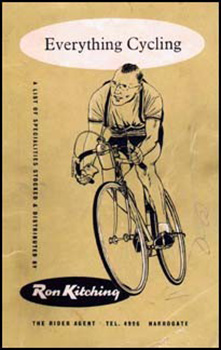
when i was in my very early teens, every week's issue of melody maker featured an advert for bell musical instruments, a london-based company with a sizeable portfolio of available catalogues, featuring guitars, amplifiers, drums and others, all delivered via mail order. as an aspiring drummer at the age of twelve, the drum catalogues were manna from heaven. the pages were soon dog-eared and worn from excessive viewing, not only when sat at the dining room table, but, i'm embarrassed to admit, under the bedcovers at night, with the aid of a torch, lest my parents saw the bedroom light on, way past my bedtime.
the drumsets on offer ranged from a two-piece, red sparkle olympic drum set (bass drum and snare, with foot pedal, hi-hat and bass-drum mounted cymbal) to a keith moon replica premier setup, with two bass drums, two rack toms, two floor toms, snare and hardware. i'd be fibbing if i said i could recall the price of either, but bell music allowed purchasers to pay monthly towards the drumset of their choice.
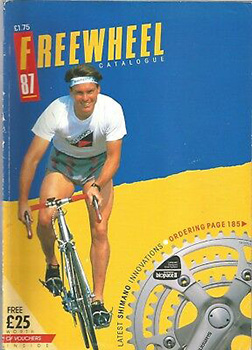
my father considered drums not to be musical instruments, and dogmatically insisted that i learn piano, as had he when a young boy. i, on the other hand, figured if i was going to have to learn some form of melodic instrument, then it would need to be guitar. this only resulted in what i believe would be known as a stand-off, neither of us willing to compromise. however, persistent to the last, i bought an acoustic guitar from a school-friend and proceeded to teach myself classical guitar from a book by frederick m noad, reaching a standard that allowed for a reasonably decent rendition of greensleeves.
however, guitar practice was purely for my father's benefit; prior to him returning from work, i would sit in my bedroom with an upturned biscuit tin, filled with coins, on my knee, assiduously practising my rudiments, using traditional grip, gleaned from a photograph of louie bellson in ludwig drummer magazine. and in order to press my case further, i would 'innocently' leave those bell drum catalogues strategically placed on kitchen and sitting room chairs, open at the page of the desired set, ever hopeful that my parents would take notice, take pity, and buy me a drumset. oh, the innocence of youth.

i never did get that red sparkle drumset, and i'd to wait until my college years, before buying myself a gold-sparkle, beverley bop kit.
and then came the bicycle obsession, but by this time, married and living in a house of my own. which is where ron kitching's everything cycling catalogue and madison's freewheel equivalent came into play, ultimately serving a similar purpose to those bygone days of bell music. whenever my birthday, or christmas neared, one or other of the two cycling catalogues would be inadvertently left open on the kitchen table, or on top of the duvet. sadly, having learned nothing from those teenage days, the wrapping paper never contained anything delivered from ron kitching or madison.
however, the modern era consists almost exclusively of websites, both for drumsets and velocipedinal ephemera. meaning that for today's teenagers, unless you 'unintentionally' e-mail or text a pertinent web address to one or other parent, or better half, the opportunities afforded by the days of the printed catalogue have gone for good. drumsets may be constructed of more salubrious and exotic woods nowadays, aided and abetted by state-of-the-art hardware, while cycle gear has arguably never seen better quality. but for today's teenagers and aspiring adults, the phrase 'never-had-it-so-good' may not be all it's cracked up to be.
meaning, of course, that we're not necessarily all on the same page.
sunday 18 july 2021
 ..........................................................................................................................................................................................................
..........................................................................................................................................................................................................friends might not be electric

many, many years ago, prior to any thoughts of the millennium bug, mrs washingmachinepost and i holidayed at center parcs in nottingham, the first time we'd visited almost anywhere since moving to the hebrides. as a confirmed velocipedinist, i felt honour bound to hire a bicycle, taking time out each day to pedal around the perimeter road, and re-assert my status as more of an expert on two wheels than on two feet.
unfortunately, as it turns-out, many others chose to follow my lead, hiring out bicycles and emulating certain aspects of those currently driving round islay and jura in rented motorhomes. while the latter regularly fail miserably to be able to reverse into a passing place, those hiring bicycles at the nottingham branch of center parcs, seemed bereft of any cycling skills whatsoever, failing to watch-out for other cyclists, braking suddenly for no apparent reason, and persistently riding round the small roundabouts in any direction that took their fancy. after several near-misses, i resolved never to hire a bicycle at center parcs, ever again, a resolution i have maintained to this day.
sadly, i now see the same set of circumstances appearing in daily cycling life.
like many holiday destinations, islay is home to at least two e-bike rental outlets which, combined with those who bring their own e-bikes, seems dedicated to creating problems that have rarely affected the more seasoned cyclists. ever since the opening of a youth hostel in port charlotte over two decades past, islay and jura have become popular destinations for touring and leisure cyclists. from ardrossan on the ayrshire coast, it's possible to sail to the isle of arran. from the arrival town of brodick, 'tis but twenty-four kilometres to lochranza from which a small car ferry leaves for claonaig on the kintyre peninsula, from there, it's only eight kilometres to kennacraig from where the islay ferries depart.
for the touring cyclist, eager to visit the west coast islands, this is manna from heaven, for twice a week, there's a ferry leaves from port askaig on islay, heading for oban via colonsay. from oban, you can sail to mull or tiree, or ride further north to skye and westward to the outer hebrides.
this year in particular, we are seeing considerably fewer whisky tourists, and a great number more of what might be termed regular tourists, many of whom are hiring e-bikes to visit the more remote areas of the islands. but, just like those renters at center parcs, for the majority, this is apparently the first time on a bicycle since childhood.
to place this in perspective, there are currently nine malt whisky distilleries on islay and one more on jura. these all have to receive regular deliveries of grain and yeast, have casks and spirit moved to the mainland, and all of which require to have the pot ale dispersed to an outlet at caol ila, a process that has 40ft articulated tankers driving the islands' roads, twenty-four hours a day. those of us who live here and cycle regularly, are well aware of all this, and have a respectful relationship with the truck drivers and, indeed, islay and jura's motoring public.
however, having recently witnessed several groups of visitors aboard e-bikes, presumably because the motor assistance has allayed fears of an extra-curricular effort, a possible problem looms ahead.
the logic of riding two-abreast on two-lane roads is well-known. it means that any following traffic, when wishing to pass, effectively have only the length of one bicycle with which to cope, as opposed to two, if riding in-line. visiting cyclists, based on observation, seem quite oblivious to traffic protocols. i can see that you might question how this is any different from those hiring analogue bicycles, and i must respond that, essentially, it isn't any different. but as mentioned above, the addition of the letter 'e', has undoubtedly encouraged many more to join the happy throng, several of whom seem to think the addition of an electric motor provides them with super-powers and an invisible force-field.
only yesterday afternoon, returning from a bout of froth-supping at debbie's, we happened upon a group of six e-bikers heading south, cheerfully ignoring the traffic, and inadvertently making life difficult for a large truck attempting to overtake. i can only surmise that, if this sort of thing is happening on islay, there's every likelihood that it's occuring on a larger scale on the mainland. given the occasional flurries of disagreement that surface between motorists and cyclists, the last thing any of us needs is an escalation.
during last year's lockdown, when many left that car sitting in the driveway and took to the bicycle, many who i think should have known better, thought that not only had the hour of the bicycle arrived, but that the reduced pollution levels would be here to stay. but the recent increase in the price of a barrel of oil would suggest otherwise. petrol prices are rising because the car has returned with a vengeance, creating a demand for the black stuff that is not being satisfied by current production. the evidence shows that motor traffic across the world has rapidly increased once again, increasing the possibility of many more unwanted bicycle/motor car interfaces.
i do genuinely see the apparent advantages of the e-bike, a velocipede that seems to be providing for the bicycle industry a similar service as did the mountain bike in the 1980s. the electric bicycle itself is not the problem, but a sizeable proportion of those who have been attracted by the promise of less energy expenditure; the path of least resistance, if you will.
i apologise if this comes across as arrogant, but i'm just saying.
saturday 17 july 2021
 ..........................................................................................................................................................................................................
..........................................................................................................................................................................................................ergonomics
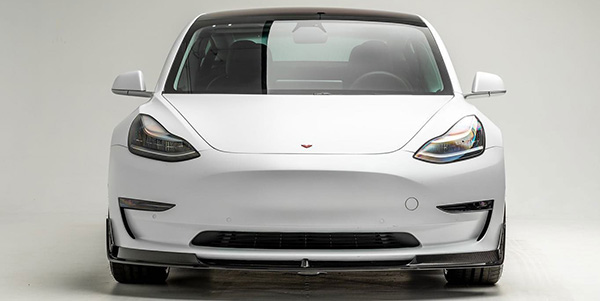
in the mid-1990s, the advent of digital cameras brought the flexibility for camera manufacturers to alter the shape, no longer hidebound by the necessity of winding plastic film behind a lens. while this makes a smidgeon of logical sense, in terms of ergonomics, it was something of a disaster. the model purveyed by both apple and kodak, resembled a large lozenge, pretty much preventing the opportunity for the photographer to hold it with one hand, yet still able to press the shutter. it will not surprise you to learn that the existing shape of slr cameras had developed not only for the pragmatism of containing film, but the practicalities of shooting images one-handed, if necessary.
it only took a short period for users to feedback to the manufacturers that lozenges were not the way to proceed. nowadays, even small, compact digital cameras are shaped to allow the greatest flexibility of use. traditional camera use, both film and digital, has dramatically receded of late, at least one of the reasons why camera shops have gradually disappeared from the high street. the reason, need i make mention, is the smartphone, almost all of which are advertised on the strength of their cameras at the expense of any mention of their ability to make phones calls or even send text messages. and despite smartphone optics being considerably different than the 'straight-line' factor exhibited by traditional cameras, ergonomics still play a big part in the design.
the form factor and screen design of the average smartphone, means it's perfectly possible to hold with one hand, yet still press the software shutter with your thumb.
though electric cars are still very much in the minority, and even more so out here in the sticks, those that i have come across, particularly elon musk's tesla models, seem to have avoided the design department's quality control. conventional cars require some sort of radiator grill, not only to act as an identifier midst many almost identical vehicles, but to allow a smooth flow of air to the radiator sitting a few centimetres behind. obviously enough, the technical demands and shape of electric motors does not require similar considerations.
in more cases than is seemly, with no necessity to include a radiator grille, several manufacturers seem to have simply continued with their usual design constraints, but left a blunt, less than aerodynamic flat portion above the front bumper/fender. aesthetically, this leaves a great deal to be desired, and as yet, other manufacturers seem quite happy to continue with their traditional designs, yet simply including baffles where once existed a grille. surely the shape and size of electric motors allows for more creative exterior designs?
and it's more than possible that the future of the bicycle will involve similar ergonomic choices to be made at the design stage. consider that the brake levers, long ago combined with the gear levers, not only allow for activation of both brakes and gears, but are a common resting place for our hands while riding. this makes perfect sense, given that we tend to use our fingers to both brake and change gear. functionally, these have been designed to allow the routing and function of both sets of cables, but the advent of electronics has altered the necessity for the gear levers to be situated in the traditional location. when considering sram's wi-fli changing, there's no need to consider any cables whatsoever. so technically, the changers could be placed anywhere you darned well like.
several years past, i was sent a colnago c59 for review, kitted out with campagnolo super-record eps. at the time, vicenza did not offer a hydraulic disc brake option, so the brakes and shifters were sourced from formula. the inner flip levers, though effectively switches, pushed against very small springs, in order to replicate the sensation offered by mechanical shifting. however, on the right-hand lever, the spring developed an irritating habit of sticking, forcing the derailleur to continually move up the block, even if attempting to change down. the irony, which will not be lost on many of you, is that the electronics did not require a moving lever in the first place. and essentially, this is still the case today.
so why is it that, despite requiring no more than a touch-sensitive button, all three manufacturers continue to feature pretend levers to satisfy a need that no longer exists? the young, modern-day cyclist is scarcely hidebound by the heritage of either downtube levers, or even movement on bar-mounted levers; with the possible portent of electrically actuated brakes, and patents existing for glove actuated electronics, is the cockpit in line for a functional and ergonomic change in the foreseeable future? or would such a wholesale change simply replicate the mistakes made by mid-nineties camera manufacturers?
but, perhaps more pertinently, will the uci allow it?
friday 16 july 2021
 ..........................................................................................................................................................................................................
..........................................................................................................................................................................................................aslfap syndrome

i am, essentially, no different from any other cyclist. i'm guaranteed to be slower than some, and quite likely, faster than others, though i'd be willing to accept that the latter number is decidedly smaller than the former. when the wind blows from the south west as i hurtle (it's all relative) down uiskentuie strand towards yet another froth supping session at debbie's, i will be slower than on the return trip. and when i began to tire towards the end of those recently ridden 108 lachlan morton kilometres, there's every likelihood that i slowed down just a smidgeon. (actually it was more of a dramatic slowdown, but let's not get into semantics.)
this is, i would tentatively suggest, the natural order of things. there are the professionals who have an uncanny ability to reach into their pain cave, as the late paul sherwen would describe it; with very few exceptions, we are not paid to do likewise, and though all enthralled by the mystique and bragging rights engendered by the pain and suffering of the monochrome era, hurting ourselves in the process of riding a bike seems decidedly un-jack thurston. thus, it would not be stretching credibility too far to state that the average bike ride will ebb and flow from beginning to end.
when it ebbs and when it flows, is at the behest of weather, road and our energy reserves. i'm pretty sure it has always been this way. but i tend to think that, as cyclists, we're able to respond to the latter conditions in our own way, without the need for external stimulus, or hand-holding.
but then there's the evolving world of the e-bike. currently, the majority of such machines feature three distinct modes of motor support, all selectable by the rider, depending on which combination of the ebb and flow criteria require to be met. a friend of mine, however, with one of the latest models of e-bike, discovered that the downloaded smartphone app relevant to her model of bicycle, when implemented, reduced those support modes to only two. though neither of us have figured out the point of the app dispensing with the lowest mode, it seems possible that a modest degree of programming would not only restore its function, but possibly allow other, hitherto unknown combinations. when the app is switched off, all three modes immediately become available.
however, aside from introducing a seemingly unnecessary layer of faff to a simple and intuitive mode of travel, we have both been left wondering of the validity of doing so. sadly, any convoluted assistance being provided via a ubiquitous app, seems likely to be only the thin end of the 'solution looking for a problem' wedge. for manufacturer of a large number of e-bike motors, bosch e-systems, has introduced a new tour+ riding mode. this, according to the german manufacturer, offers e-bike riders "dynamic, continuous support depending on their own effort". sensors on the motor measure the rider input more than 1000 times per second, and gauges just how much support the rider requires.
when introducing any additional power support, it is sensitively measured to 'create a natural riding sensation', a statement i would interpret as being the verisimilitude of riding an analogue bicycle. this reminds me of the drum companies' determined effort to make an electronic drumset sound like an acoustic set; an impressive technological development, but once again, quite possibly a solution looking for a problem. though the pedelec and s-pedelec specifications take their signals from rider input, as opposed to simply creating an electric moped, how far in the future is an e-bike that all but minimises rider effort, not necessarily because it's found to be necessary, but simply because it's possible?
cycling is both activity and transport, which, until now, has been an ideal way of keeping fit, either by design or by accident. and though even i can see that the e-bike has its place in society, i still harbour a sneaking suspicion that many see it as the easy way out; appearing to be active velocipedinists, but relying more on motor support than an inherent ability to ride a bike unaided. it took very little time for totally unnecessary full-suspension to find its way onto kids' bikes; how long before motor support does likewise, right at the very point when learning to ride unsupported, is a desirable means of curbing obesity and promoting a new-found sense of independence? and how long before 'continuous support for a natural riding sensation for sporty e-bikers' becomes the norm?
if only i could discover who asked for this solution.
thursday 15 july 2021
 ..........................................................................................................................................................................................................
..........................................................................................................................................................................................................the 'real' alt tour

a few days ago, i mentioned that ef education first - nippo professional, lachlan morton, was undertaking the tour de france the hard way. instead of mingling with his pals in the peloton, he was on his own, 'somewhere in france', as the documentaries would say. and while the 'real' competitors in le tour could look forward to their luxury coaches, hot showers, masseurs and a decent meal after a hard day in the saddle, lachie was scoping out a suitable location in which to pitch a tent, and hope to heck that the local boulangerie, or indian takeaway hadn't yet closed for the day.
morton has now completed his alt tour, as rapha's social media has christened it, riding a total of 5,500 kilometres, ascended 65,000 metres and raised £369,433 for world bicycle relief. that impressive sum of money translates to 2,718 buffalo bikes to be presented to those who need them most, adults and children whose impoverished state and daily travails, make even lachlan morton's pain and suffering seem positively benign by comparison. morton was always going to finish first, because in truth, he was his only competitor. but even then, he exceeded his own expectations by arriving alone in paris in the dark, on monday evening, five days ahead of the 'real' tour de france.

at the risk of repeating portions of my article from a few days past, lachlan not only rode the same stages as the other boys in the band, but where they were moved between stages either by coach, rail, or aircraft, lachlan rode every kilometre, to say nothing of the fact that he completely eschewed any thought of a rest day. so what if the 'real' race happened in this manner? would tadej pogacar be quite as sprightly in the mountains, after spending a sleepless night under a rhododendron bush in a field near saint-paul-trois-chateaux, or mark cavendish equal eddy's record number of stage wins after spending half an hour trying to fix the gearshifting on his specialized?
there are many of us who own pretty much enough kit to pass (at a distance) for a pro rider nipping into the newsagent for the latest issue of the comic on a thursday afternoon. i, for instance, have last year's ef education first jersey and bibshorts, and at one time, had full team sky clobber, with even my name emblazoned on the jersey's side-panels. but it doesn't take a genius to note that there's no neutral service car following on a sunday morning, nor a nearby team car handing out water bottles near saligo bay. so if i have a clicking noise emanating from the bottom bracket, or suffer a puncture on foreland hill, guess who's going to have to take care of those irritations?
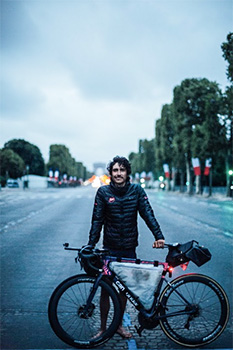
so, while cycling prides itself on scarcely separating itself from the fans, and unlike lewis hamilton fans, we can actually buy pretty much the exact same bicycle as ridden by wout van aert, there's still a lot separating them from us. and i don't just mean topline speed. in these days of climate change observations, removing the peloton of following vehicles (including the voiture balai), would surely be not only pragmatic, but mostly welcomed by the planet. and while we might record average speeds around 50% slower than the pros, we could perhaps take some consolation from the fact that we can (maybe) change disc brake pads a darned sight quicker than mathieu van der poel.
so perhaps lachlan morton's successfully impressive undertaking could be seen as the vanguard of a new era in grand tour evolution? aside from making the bicycles closer to real life than to formula one, think of the sponsorship opportunities for bike bag manufacturers, bicycle pump purveyors, and even those making puncture repair kits. maybe if year one of this new, clean, green world tour proves as successful as it's bound to be, the introduction of mudguards could follow in year two, along with rack-mounted d-locks (you can never be too careful nowadays). so doing may rearrange our appreciation of the sporting spectacle, but i feel that mr morton's example ought to be celebrated by a great deal more than plaudits and the august release of a rapha movie.
and to reiterate yesterday's sign-off, i dare you to tell me i'm wrong.
photos: rapha
wednesday 14 july 2021
 ..........................................................................................................................................................................................................
..........................................................................................................................................................................................................cream always rises to the top
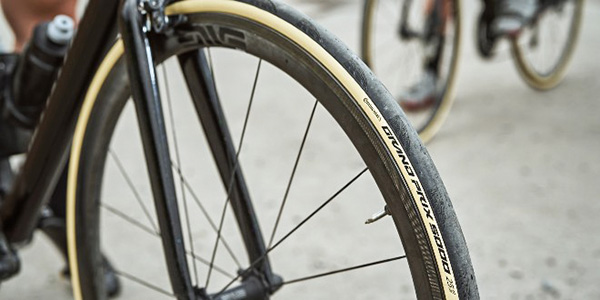
there are many details about the bicycle that have to be just the way they are. a friend of mine has deviated just a smidgeon from the uci directive that all cycles ought to maintain the traditional double-diamond frameset, in favour of voluntary recumbancy (as another friend of mine helpfully pointed out). though i believe he has just taken delivery of a new recumbent frameset, having started out under his own power, the art of lying down on the road has since accumulated a motor and battery, though precious little by way of increased speed.
but, as pointed out in phil cavell's excellent book, 'the midlife cyclist', like many a cycling innovation, from a competition point of view, the hapless recumbent fell foul of the uci's myopia in the early part of the last century, mandating that lying down on the job would simply remain unrecognised. the song remains the same to this day, despite the human form having hardly been designed to ride upon the safety bicycle from which all else derives. many will recall the outlawing of innovations such as the lotus carbon bicycle upon which chris boardman laid the foundations for his present career. and the banning of almost everything associated with the flying scotsman, graeme obree, leaving him pretty much, with no career at all.
it has been but a few years since any manufacturer wishing to submit their frames to the vicissitudes of competition, have had need of submitting a production sanple to aigle, in order that it might receive their seal of approval, represented by a sticker on the seat-tube. woe betide any who attempt to sneak in under the cover of darkness. yet it is, in itself, iniquitous to blame the sport's governing body for sole possession of stemming invention within the velocipedinal realm. despite being championed by many, neither hub gears nor toothed belt drives have made serious inroads into the daily pedal, and this despite an obvious predilection for less maintenance, fuss and mess, in relation to the venerable derailleur system beloved of many, both rider and manufacturer alike.
there is a reasonably sound theory, based on historical evidence, that it may take only adoption or sanction within professional circles, and we'd all be clamouring for a carbon rimmed wheel with a rohloff hub gear at its epicentre, driven by a gates carbon belt drive. after all, electronic gear shifting and hydraulic disc brakes have succeeded where recumbancy has manifestly failed, despite neither arguably contributing anything to the theatre of sporting prowess. as i recall, eddy never had too much difficulty reaching to the downtube, nor caliper braking on the descent from the galibier.
however, many of the technical accoutrements to be found on the modern-day road bike are not without merit. eddy may have reached for a downtube lever in the face of no viable alternative, but who amongst us would swap that sensation for the brake lever gearchanging pioneered by shimano at the behest of the ratcheting technology developed from their fishing division? and though lachlan morton may have had good cause to revert to sandals and platform pedals round france, you and i are more than likely besotted with the cleats and clips that form the constitution of the majority of the race born pedals on offer.
similarly, the materials on which we ride. though i am more than happy with my steel ritchey logic, the ferrous metal is no longer the sole item on the frameset menu. the intrepid cyclists of the 21st century can take their pick from aluminium, titanium, carbon and even wood, depending on their own needs and proclivities. as long as the shape conforms to the uci's approved list, thus easing the selection of componentry, there's no need to rest your laurels on eddy's sole option.
but there are other, less intrinsic, but far more aesthetic and, dare i say so, superficial changes that have not sat well with the feng shui of cycling. many of the pros may still be aboard a set of competition tubulars, perhaps every bit as much for reasons of tradition than of science, but what many of those race tubulars have in common, is that of the sidewall colouring; traditionally cream or tan, depending on the manufacturer's nomenclature. either way, a light coloured sidewall is eminently preferable to the black that has infliltrated both the clincher and tubeless varieties proffered by many. that is, quite frankly, entirely wrong.
quite why the uci have not mandated the tan or cream sidewall to be sacrosanct all across the board, remains a complete mystery to many. obviously a tyre or tubular thus facilitated, is not only demonstrably quicker in a straight line, but illuminates the superiority of the bicycle as the functional objet d'art we all know it to be. and should you require evidence in support of what i maintain has passed beyond the rudimentary foothills of theory, take note that continental tyres have mandated that their gp5000 clincher is now to permanently join the continental tyre range as of right this minute. released as a special edition for the 2020 tour de france, a vociferous clamouring from the style conscious cycling public has persuaded the powers-that-be, to accede to perfect sense.
go on; tell me i'm wrong.
tuesday 13 july 2021
 ..........................................................................................................................................................................................................
..........................................................................................................................................................................................................